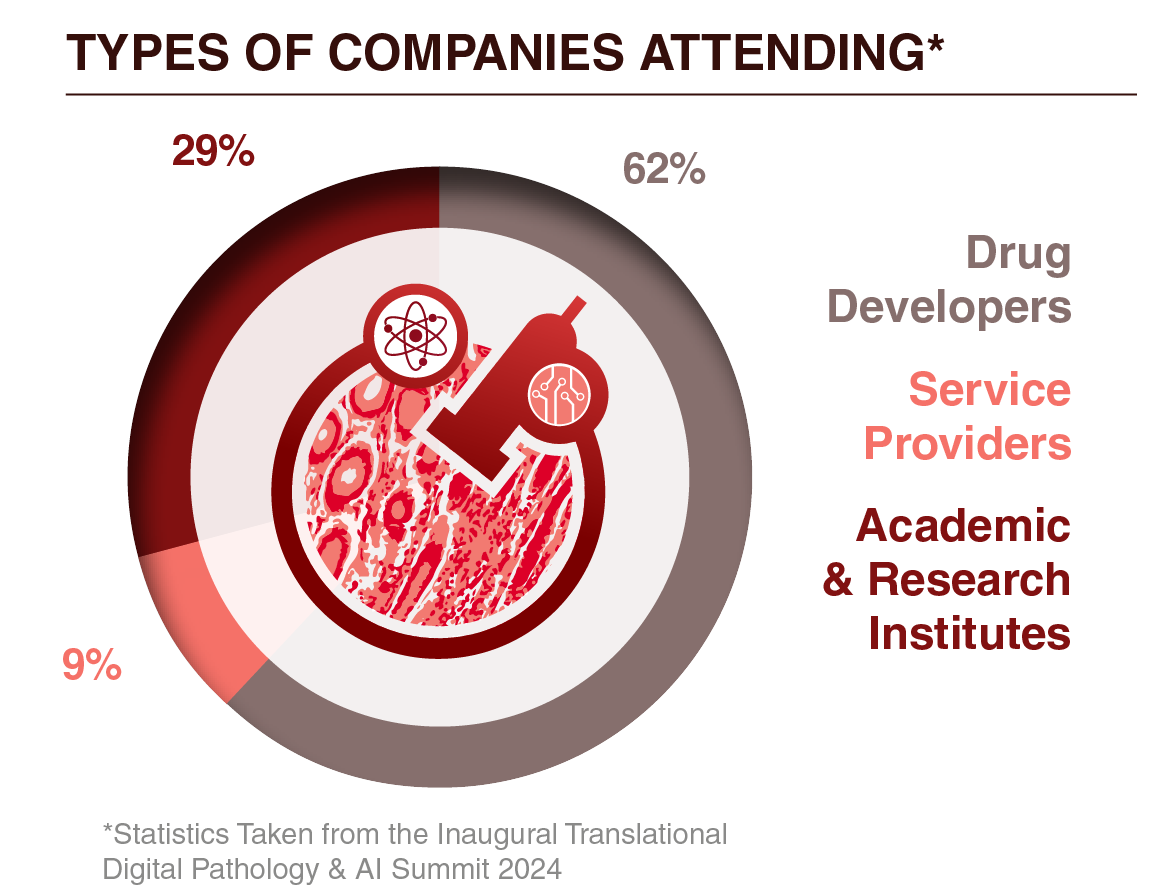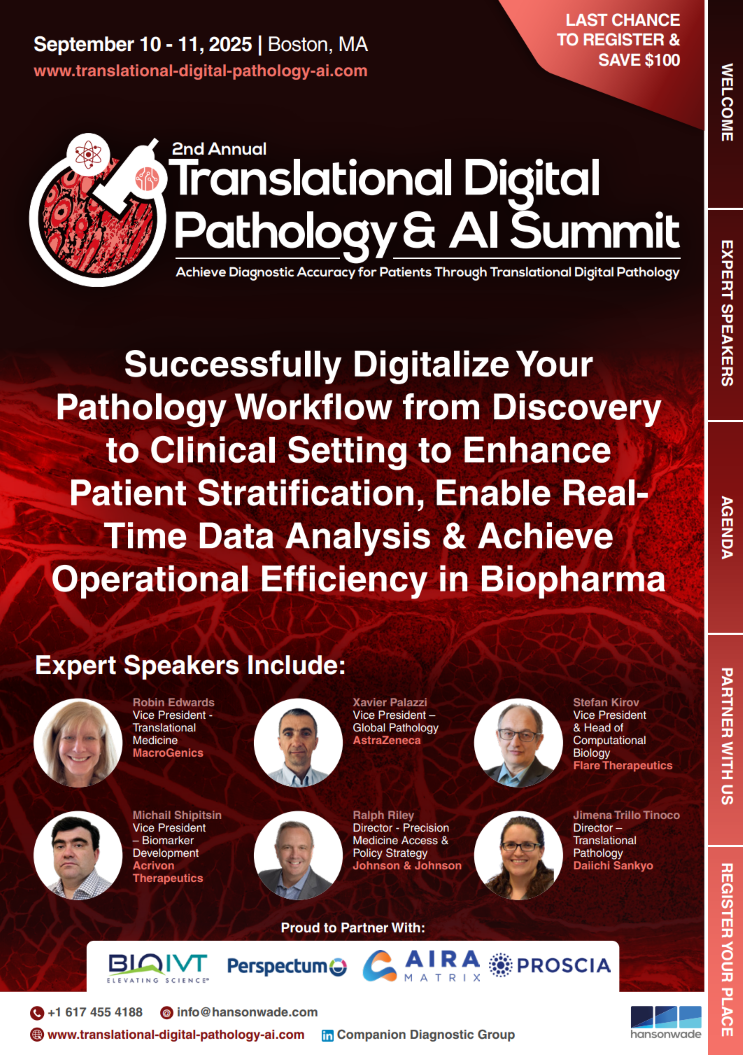Digital pathology is transforming the biopharma landscape, delivering unprecedented gains in reproducibility, operational efficiency, confidence, and diagnostic accuracy across research and clinical practice.
At the summit, global leaders and innovators explored the most pressing challenges facing the field — from standardization of workflows and validation of AI-powered image analysis tools to integration within existing laboratory systems and securing reimbursement for digital pathology solutions.
They unpacked the latest breakthroughs, shared real-world implementation strategies, and helped shape the future of this revolutionary technology to maximize its value for both diagnostic and therapeutic development.
We Joined to:
Unleash the power of spatial biology to unlock unprecedented insights into tumor microbiology and transform therapeutic targeting, to maximize the efficacy of your drug with Acrivon Therapeutics and AbbVie
Transform your patient selection strategy with advanced AI & ML algorithms to optimize trial efficiency and improve predictive accuracy to drive better clinical outcomes for patients in need with Merck and Genmab
Enhance your technical and clinical validation approaches in digital pathology to gain unparalleled confidence in leveraging new and revolutionary technologies, to improve accurate real-time data analysis and decision making with Daiichi Sankyo and Takeda
Advance preclinical decision-making with enhanced operational efficiency and unprecedented image analysis for improved safety assessment and accelerated drug development with AstraZeneca and Sanofi
Overcome nuanced regulatory barriers to harness the full potential of digital pathology in clinical trials, enabling robust approvals, driving faster translation to clinical impact with Regeneron and Moderna
Who Did We Meet?
Directors, Heads, and Vice Presidents of Pathology, Translational Research, Image Analysis, Precision Medicine, Data Science, and more came together to overcome key challenges, including the lack of versatility and standardization in protocols — while working to build digitally enabled IT infrastructures that fully support digital pathology across the full workflow for better patient outcomes.



